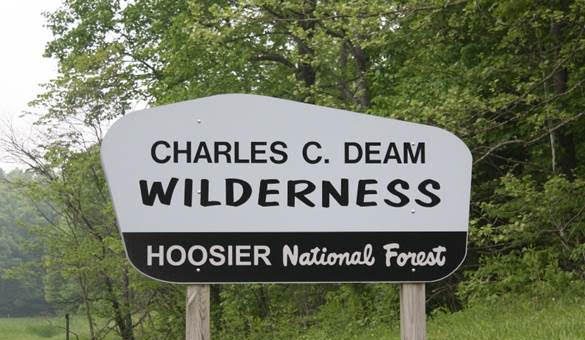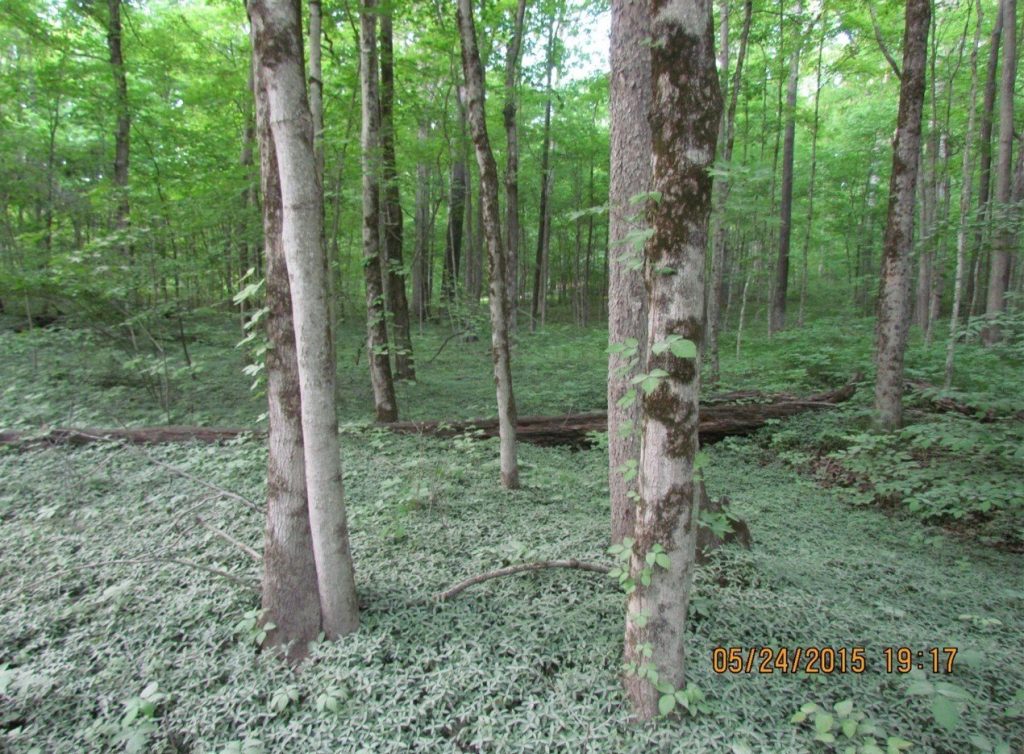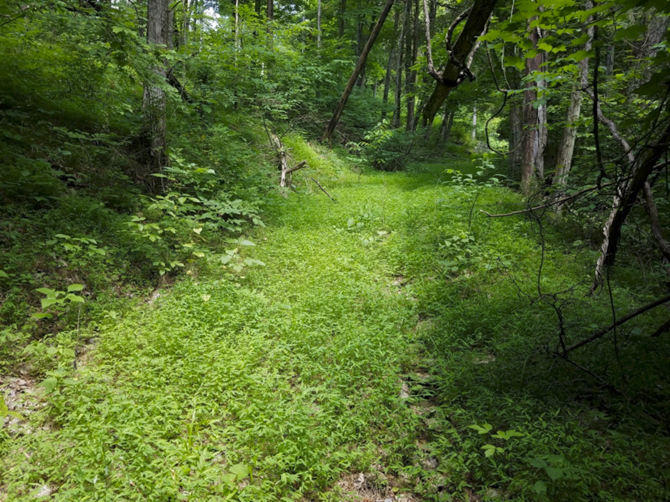
BEDFORD— The Hoosier National Forest (NF) and the State of Indiana Cooperative Invasives Management (SICIM) are collaborating to survey portions of the Charles C. Deam Wilderness for the presence and spread of various invasive species.
Eco Logic, LLC, an ecological firm based in Bloomington that specializes in restoration, has been tasked with mapping invasives along the 36 miles of trails in the Wilderness. This ongoing project has identified 14 different invasive species.
In 2023, surveys were conducted within 25 feet of either side of the Wilderness trails to detect signs of invasive species. SICIM administered the contract with Eco Logic. In 2024, Eco-Logic is currently focused on mapping invasives around Frog Pond Ridge in the Wilderness. Plans are in place to seek additional funding in 2025 to continue mapping efforts, specifically targeting two common invasives originating from old homesites: tree-of-heaven and wineberry.

Cheryl Coon, Economic Partnership Coordinator for the Hoosier, emphasized the significance of the mapping initiative in providing the Forest Service with a comprehensive understanding of the extent of invasive species spread in the Wilderness. This information will enable the development of a strategic management plan to address and control these species effectively.
Coon noted that the historical human use and disturbance of the area have facilitated the establishment of invasive species, requiring extensive efforts to mitigate their impact on the natural environment. The Forest Service has been actively involved in manual removal efforts, such as hand-pulling garlic mustard along a corridor in the Wilderness for over fifteen years. With limited funding, the mapped data will serve as a valuable tool to prioritize areas for invasive species management, aiming for maximum impact. Coon emphasized the potential for effective stewardship to control and restore native ecosystems, expressing optimism about the possibility of regaining control over invasive infestations. Notably, the use of herbicides is not currently authorized in the Wilderness.
SICIM highlighted the proven effectiveness of herbicide use in removing invasives and restoring ecosystems, emphasizing the need to consider this approach to prevent the further spread of invasives from trails and old homesites. However, any potential use of herbicides would involve a comprehensive environmental analysis and public input. The results of Eco Logic’s surveys include detailed maps showcasing the locations of different invasive species. These maps can be accessed on SICIM’s website at sicim.info/news.

Among the species surveyed, lesser celandine, Siberian squill, garlic mustard, Star-of-Bethlehem, and poison hemlock were identified, with varying distribution and impact within the Wilderness. Japanese stiltgrass emerged as the most abundant trailside invasive species. In contrast, species like Sericea lespedeza, Myrtle, multiflora rose, autumn olive, and Amur honeysuckle were noted as significant invasive shrubs in the Wilderness.

The mapping initiative has also identified correlations between pine plantings and the occurrence of certain invasives, shedding light on the historical land use and settlement patterns contributing to the current presence of invasive species.
Moving forward, the mapping results will inform improved management strategies to address the invasive plant species in the Wilderness. The comprehensive mapping efforts and ongoing collaboration between the Hoosier National Forest, SICIM, and Eco Logic aim to enhance the understanding and management of invasive species, ultimately working towards preserving and restoring the natural biodiversity within the Charles C. Deam Wilderness.
SICIM is a 501-c3 non-profit organization established in 2008. A Board of Directors oversees the organization. The organization’s mission is to protect Indiana lands and waters by coordinating efforts to identify, prevent, and control problematic invasive species. In 2017, SICIM undertook a statewide role, in partnership with the NRCS, to develop CISMAs (Cooperative Invasive Species Management Areas) to represent all counties in Indiana. Under this new statewide role, SICIM currently employs 5 Regional Specialists across Indiana.
For more information about SICIM and the Indiana Invasives Initiative, visit SICIM Homepage.



